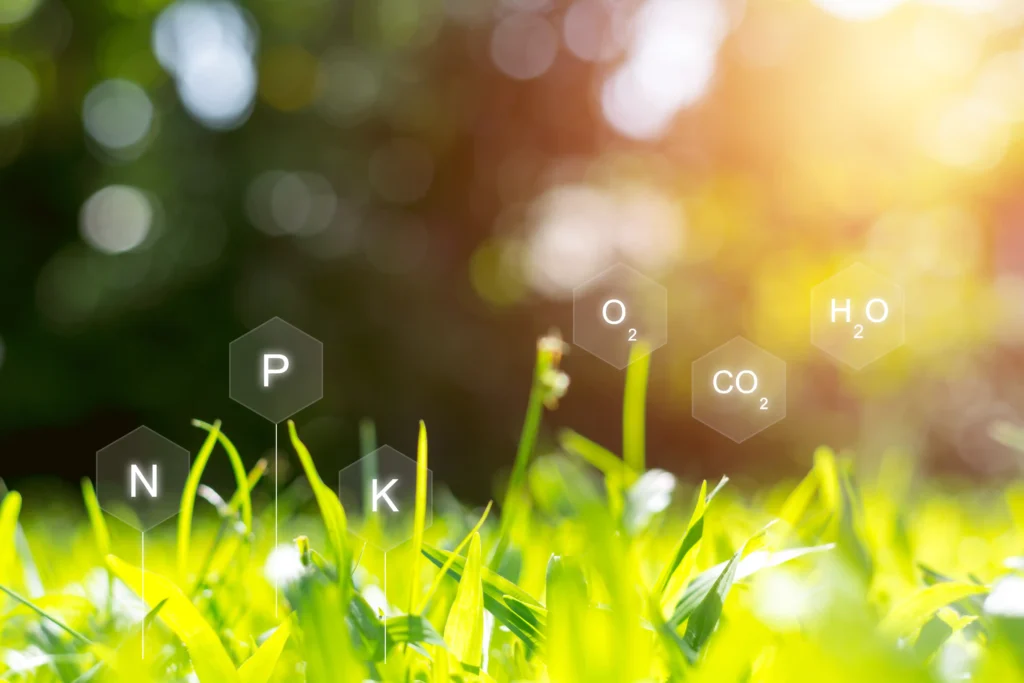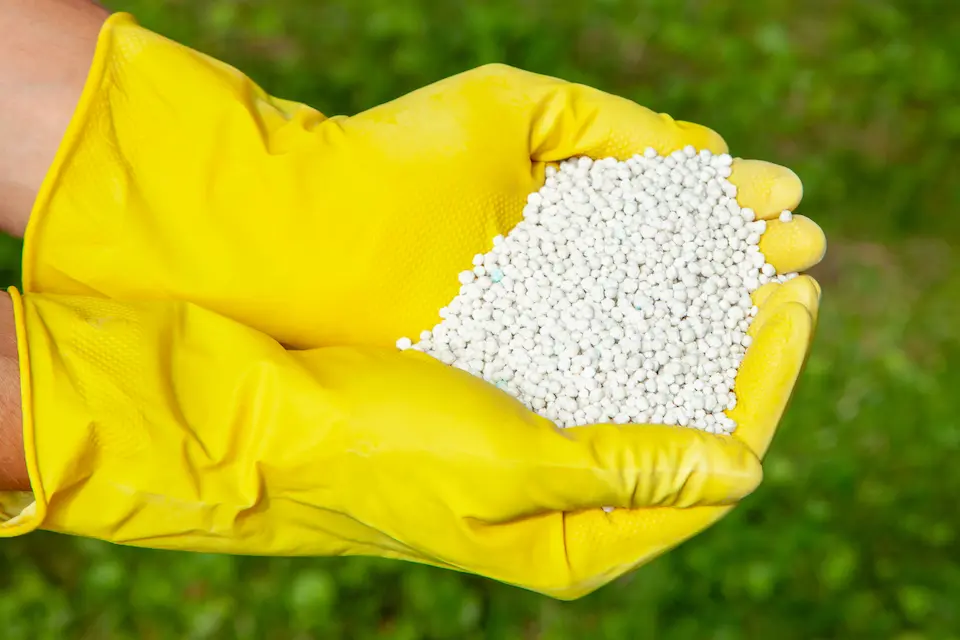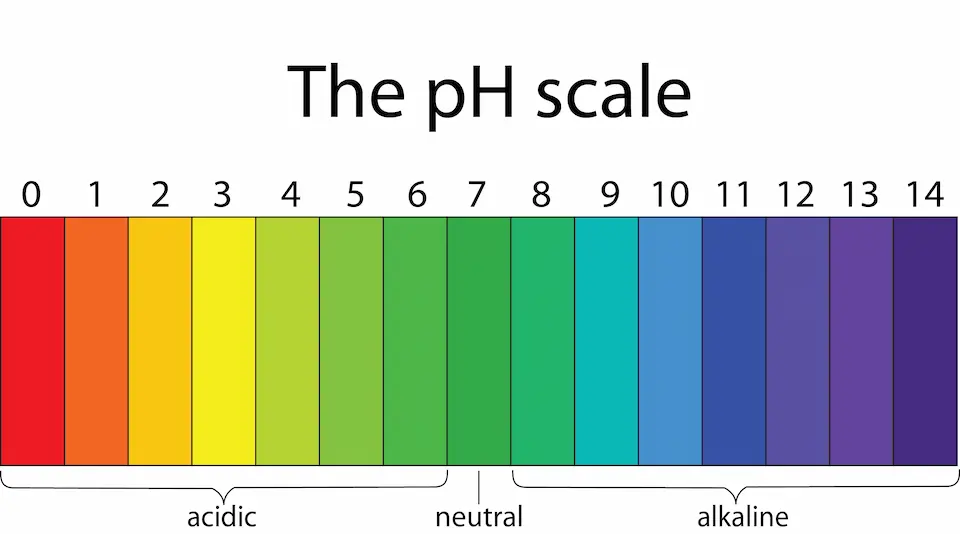Creating a Perfect Fertilization Schedule for Your Lawn

Fertilization plays a crucial role in providing essential nutrients that promote strong growth, vibrant color, and overall resilience. However, creating a perfect fertilization schedule can be a daunting task without the right knowledge and guidance.
Our lawn fertilization experts from Turf TitanZ are here to walk you through the steps to create a customized fertilization schedule for your lawn. From understanding your lawn’s nutrient requirements to choosing the right type of fertilizer and implementing proper application techniques, we will equip you with the knowledge to ensure your lawn receives the nutrients it needs at the right time.
Role of Fertilization in a Healthy Lawn
Fertilization plays a vital role in maintaining a healthy and vibrant lawn. It provides essential nutrients that are necessary for the growth and development of grass plants.
- Nutrient Supply: Fertilizers supply essential nutrients that may be lacking in the soil, ensuring that the grass has an adequate supply for optimal growth.
- Growth and Recovery: Fertilization stimulates healthy growth, allowing the grass to fill in thin or bare areas.
- Color and Appearance: Fertilizers enhance the color and visual appeal of the lawn.
- Weed Suppression: Regular fertilization helps promote thick turf, reducing opportunities for weed seeds to germinate and thrive.
- Disease and Pest Resistance: A healthy and robust lawn can naturally defend itself against common lawn pests and diseases.
- Environmental Benefits: Healthy lawns contribute to improved air quality by capturing dust and pollutants and producing oxygen through photosynthesis.
Understanding Lawn Fertilization

One crucial aspect of lawn fertilization is understanding the key nutrients required for healthy lawns.
Key Nutrients Required for Healthy Lawns
These nutrients are often referred to as N-P-K, representing the chemical symbols for nitrogen (N), phosphorus (P), and potassium (K).
Nitrogen (N)
Nitrogen is a primary nutrient that is vital for lush and green foliage in lawns. It plays a crucial role in promoting leaf and stem growth, improving the overall appearance and aesthetic appeal of the grass.
Phosphorus (P)
Phosphorus aids in the establishment of a strong and extensive root system, enabling grass plants to access water and nutrients more efficiently. Phosphorus also supports the development of flowers and seeds in grasses that produce them.
Potassium (K)
Potassium contributes to the overall vigor and strength of the grass, making it more resistant to environmental stresses such as drought, heat, and cold. It also enhances the grass’s ability to recover from damage caused by pests, diseases, or physical disturbances.

Different Types of Lawn Fertilizers
When it comes to grass fertilizer, there are different types available to meet the specific needs of your lawn. Understanding the characteristics and benefits of each type of product can help you keep a greener lawn thanks to your lawn care routine.
Organic Fertilizers
Organic fertilizers are derived from natural sources such as plant matter, animal waste, or compost.
They offer several benefits for lawn care:
- Slow-Release Nutrients
- Soil Health Improvement
- Environmentally Friendly
Synthetic Fertilizers
Synthetic or inorganic fertilizers are manufactured chemically and offer several advantages:
- Controlled Nutrient Content
- Quick-Release Nutrients
- Convenient Application
Slow-Release Fertilizers
Slow-release fertilizers are available in both organic and synthetic forms. These fertilizers release nutrients gradually over an extended period, providing a controlled and continuous supply to the grass plants.
Slow-release fertilizers offer several benefits:
- Enhanced Nutrient Efficiency
- Reduced Risk of Burn or Growth Spikes
- Longer Lasting Effectiveness
Assessing Your Lawn’s Fertilization Needs
Assessing your lawn’s fertilization needs is a crucial step in developing an effective fertilization program. It involves evaluating the current state of your soil, identifying nutrient deficiencies, and understanding the specific requirements to apply lawn fertilizer.
Soil Testing for Nutrient Analysis
Soil testing provides insights into the nutrient levels and pH balance of your soil. It helps determine which nutrients may be lacking or excessive, allowing you to make informed decisions about fertilizer application.
Determining the pH Level of the Soil

Most turfgrasses prefer a slightly acidic pH range between 6.0 and 7.0. A soil pH that is too high (alkaline) or too low (acidic) can hinder nutrient uptake. pH adjustments can be made by applying lime to raise pH (for acidic soils) or elemental sulfur to lower pH (for alkaline soils).
Identifying Common Nutrient Deficiencies
Common nutrient deficiencies include:
- Nitrogen (N): Yellowing or pale green color, thinning turf, reduced growth.
- Phosphorus (P): Stunted growth, purplish discoloration, poor root development.
- Potassium (K): Weak turf, increased susceptibility to stress, disease, and pest damage.
- Iron (Fe): Yellowing of grass with green veins (interveinal chlorosis).
- Magnesium (Mg): Yellowing of older leaves while veins remain green.
Assessing the Grass Type and Its Specific Requirements
Warm-season turfgrass, such as Bermuda grass or Zoysia grass, has different needs than cool-season grasses like Kentucky bluegrass or tall fescue. Research or consult with local lawn care professionals to understand the specific fertilization requirements for lawn feeding and to keep a green lawn.
Seasonal Considerations for Creating a Fertilization Schedule For Lawn
Creating a seasonal fertilization schedule for your lawn is essential for providing the right nutrients at the appropriate times throughout the year. Each season brings different challenges and requirements for your grass.
Early Spring Fertilization
Early spring is a crucial time to kick-start the growth of your lawn after the winter dormancy. The primary goal of early spring lawn care and fertilization is to promote healthy green-up and vigorous growth prior to late spring. Apply a fertilizer with higher nitrogen (N) content to provide the grass with the necessary nutrients for rapid spring growth. This helps the lawn recover from winter stress and encourages the development of dense, lush foliage.
Summer Fertilization
Applying fertilizer in mid-to-late summer focuses on maintaining the lawn’s health, color, and stress resistance. Choose a slow-release fertilizer that provides a balanced nutrient supply over an extended period. This helps sustain healthy growth, improves drought tolerance, and enhances the lawn’s ability to recover from stress.
Fall Fertilization
Fall and early fall is an important time for lawn fertilization as it prepares the grass for the approaching winter and promotes root growth. Apply a fertilizer with a balanced nutrient ratio, ensuring adequate phosphorus (P) and potassium (K) levels. This supports root development, strengthens the grass for winter, and enhances its ability to store energy reserves.
Winter Fertilization (in Warmer Climates)
In warmer climates where grass remains active during winter, a winter fertilization application may be beneficial. Choose a slow-release fertilizer with a higher potassium (K) content to improve cold and drought tolerance. This helps the grass maintain color, density, and overall health during the winter months.
Factors to Consider When Determining Lawn Fertilizer Schedule
Determining a lawn fertilizer schedule requires considering several factors that impact the growth and nutrient needs of your grass.
- Grass Growth Rate: The growth rate of your grass plays a significant role in determining the frequency and timing of fertilization.
- Soil Conditions: Conducting a soil test helps identify nutrient levels, pH balance, and soil composition. Soil testing reveals deficiencies or excesses of specific nutrients, enabling you to adjust the fertilization program accordingly.
- Climate and Weather Patterns: Consider factors such as temperature, humidity, rainfall, and sunlight exposure. In warmer climates with longer growing seasons, grasses may have higher nutrient demands and require more frequent fertilization.
- Lawn Usage and Maintenance Practices: High-traffic areas may require additional nutrients to repair and sustain the grass’s vigor. Regular mowing, aeration, and dethatching can affect nutrient uptake and availability.
Additional Lawn Care Practices to Enhance Fertilization
In addition to lawn food, there are several other lawn care practices that can enhance the effectiveness of fertilization and promote overall lawn health.
Proper Mowing Techniques
Set your mower blade at the appropriate height for your grass type to ensure optimal growth and stress tolerance. Avoid cutting more than one-third of the grass blade length at a time to prevent scalping and stress. Regular mowing helps promote thick and dense turf, encourages root development, and allows for better nutrient absorption.
Irrigation and Watering Guidelines
Proper irrigation and watering practices are essential for the health of your lawn. Deep and infrequent watering is generally recommended to encourage deep root growth and drought tolerance. Water your lawn early in the morning to minimize evaporation and fungal diseases. Avoid overwatering, as it can lead to shallow root systems and increased susceptibility to pests and diseases.
Weed Control Strategies
Broadleaf weeds and other weed varieties compete with grass for nutrients, sunlight, and water. Implement strategies for killing weeds such as pre-emergent herbicide and post-emergent herbicide applications, hand-pulling, or organic weed control methods to prevent weed infestations.
Aeration and Overseeding for Soil Health
Aeration involves removing small plugs of soil to alleviate soil compaction and improve air and water circulation. It enhances the absorption of nutrients and promotes root growth. Consider aerating your lawn once or twice a year, especially if the soil is compacted. Overseeding, which involves spreading grass seeds over existing turf, helps thicken the lawn and fill in bare or thin areas. Aeration and overseeding contribute to soil health, which supports nutrient availability and utilization.
Dealing with Lawn Pests and Diseases
Monitor your lawn regularly for signs of pest infestations or disease symptoms. Implement integrated pest management (IPM) strategies that involve cultural practices, biological controls, and targeted treatments to minimize pest and disease damage.
Contact Turf TitanZ for a Healthy Lawn Fertilization Schedule Today
Ready to take your lawn to the next level with a healthy fertilization schedule? Contact Turf TitanZ today and let our experts guide you toward a lush, vibrant, and resilient lawn. Our experienced team of Raleigh lawn fertilization specialists understands the unique needs of lawns in our area and will work closely with you to develop a customized fertilization plan that suits your lawn’s specific requirements.
Take the first step towards a healthy and beautiful lawn, by contacting us today at (919) 562-0771 or by filling out our contact form below.
